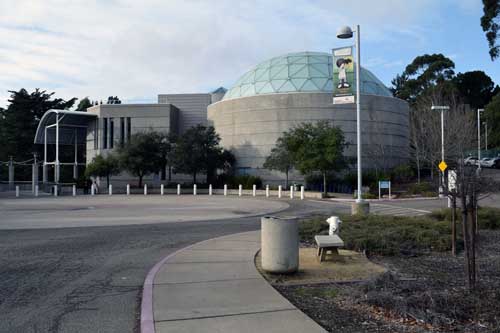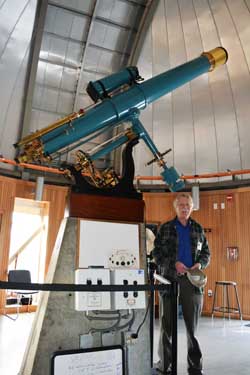
By Donald H. Harrison


OAKLAND, California – Generally when we think of the Bible and the heavens, we think of Genesis 1 which describes how God created the universe. However, here in Oakland, Genesis 29 also comes to mind.
That is because the names of the two refractor telescopes at the Chabot Space and Science Center are named Leah and Rachel. Leah, an 8-inch refractor, is the elder “sister,” acquired in 1883. Rachel, a 20-inch refractor, is the younger “sister,” having marked her 100th birthday in 2015. Rachel was brought to the San Francisco Bay Area for the 1915 Panama-Pacific Exhibition, and later took up residence at what was then called the Oakland Observatory.
That observatory’s director, Charles Burckhalter, was asked whether he would be getting rid of the older telescope now that he had a newer more powerful one such as he had been seeking for a long time. No, he replied, just as Jacob didn’t abandon Leah after marrying Rachel, who was the love of his life, neither would he, as director of the observatory, abandon the older telescope.

Thus the older 8-inch telescope became known as Leah, and the 20-inch telescope came to be called Rachel. This started the custom of giving female names to telescopes, though not necessarily ones from the Bible. Subsequently the observatory acquired a 36-inch reflecting telescope that was named “Nellie” after the daughter of a donor. And another reflector was named “Maya” for the poet Maya Angelou.
The early observatory was financed by Anthony Chabot, a hydraulic engineer who made his fortune washing gold out of the mountains. He requested that the facility which he funded be named the Oakland Observatory, a wish that was honored through his lifetime. After he died, however, Oakland decided to honor its benefactor by naming it the Chabot Observatory. Light pollution chased the observatory from its original home in downtown Oakland to another spot at the foot of the Oakland hills, and later still to its current locations nestled in the Oakland hills at 10000 Skyline Drive.
Rededicated in 2000, the 88,000-square-foot Chabot Space and Science Center is housed in two buildings connected by a bridge. The center sits regally upon a 13-acre campus. In keeping with philanthropist Chabot’s bequest, the public may come for free to view the stars every Friday and Saturday evening, weather permitting.
*
Harrison is editor of San Diego Jewish World. He may be contacted via donald.harrison@sdjewishworld.com. Any comment should be accompanied by the writer’s full name and city and state of residence.